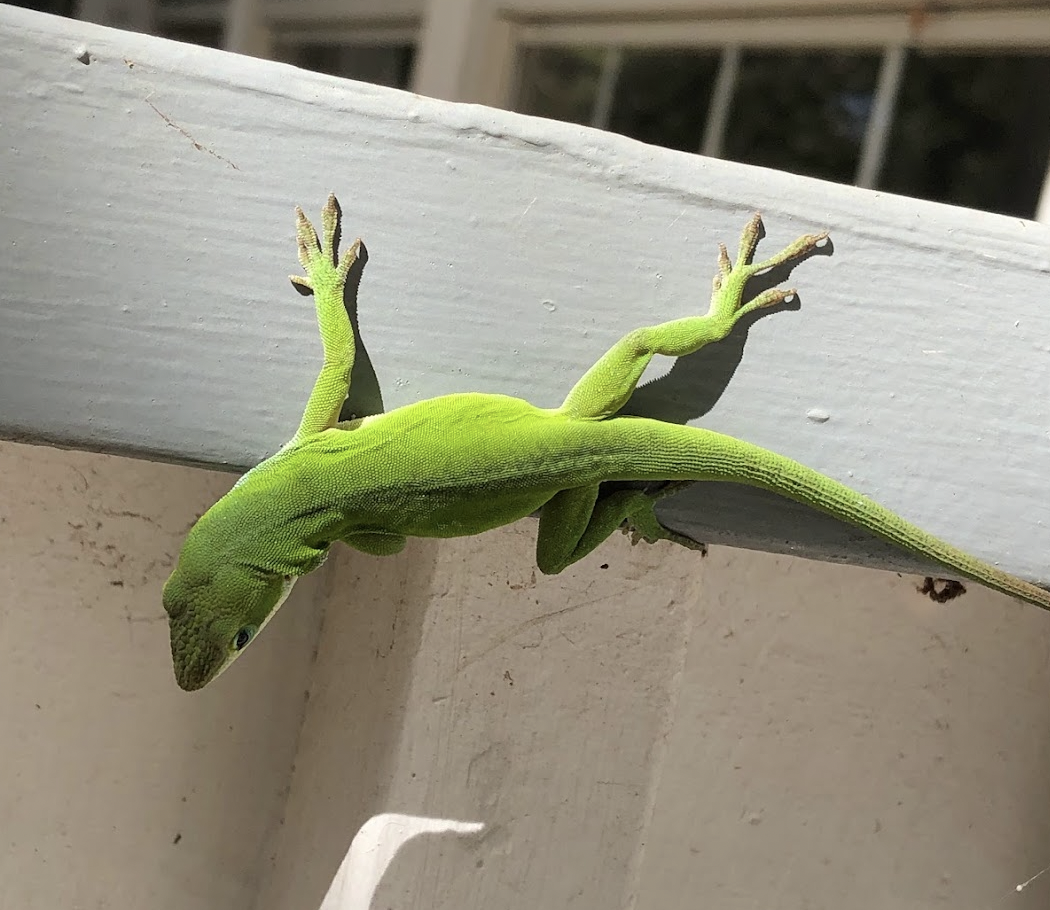Is This Lizard a Chameleon or an Anole?
Fascinating facts about a common resident of warm, humid places.
If you live anywhere from Central Texas to the Southeast United States, you’ve probably seen this common reptile. Like me, you may have wondered the name of this bright green lizard. So finally, I snapped a shot and uploaded it to the handy I-Naturalist app, which responded with certainty—Green Anole or Anolis carolinensis.
They are also known as Carolina anole, American anole, American chameleon, and red-throated anole. The green anole is one of over 400 species of anole found in the American and Caribbean tropics. They are perfectly at home in cities or forests, anywhere with a suitable habitat.
All lizards are reptiles.
This means they are vertebrates and are cold-blooded, getting their body heat from the outside temperature.
The green anole is a common slender lizard whose color varies from gray-brown to brown to bright green. Depending on whether it’s on a tree trunk or a green leaf, the lizard can change its color for camouflage. Males have a noticeable dewlap that can become pink when displayed.
It changes color, but it’s not a true chameleon.
It is commonly referred to as a “chameleon” due to its ability to change color, but not a true chameleon.
The little fellow in the photo above was hanging out on a deck, surrounded by oak trees with plenty of dappled shade. I’ve often seen them on fences or walls waiting for insects. Since they are diurnal, they’re active during the day and easy to spot.
Anoles prefer humidity of around 70%, so you’re not likely to find them in Arizona or other dry environments.
The male lizards can grow up to eight inches in length, including the tail. They are nearly entirely insectivores and will eat anything they can catch and fit in their mouths. I’ve read they also drink pollen, but I’ve never seen that myself.
Yes, losing part of their tale is an escape mechanism, and it will grow back.
photo by Allison Devan
After studying more about this interesting species, native to Texas, I know the breeding season runs from March to September.
You’ve probably seen the male lizard showing off by doing pushups and expanding his dewlap, even turning it pink, to attract a mate. One male can breed several females.
When lizards mate, the female stores the sperm that fertilizes the eggs.
Watch for an egg that is likely to be slightly buried in a damp, protected location. A wild female lays one egg every six weeks during the breeding season.
The female lays one egg up to six times in one year. She can lay up to 18 eggs during the season, but she doesn’t hatch or protect the young that hatch in five to seven weeks. As soon as they hatch, they must begin looking for small insects and avoiding predators.
Who likes to eat anoles?
Hawks, cats, snakes, and other larger lizards enjoy eating a tasty anole. Cats are considered one of the prime lizard killers. In New Zealand, one cat was found with 49 skinks in its stomach! If they avoid these predators, anoles often live from two to ten years.
Anoles aren’t capable of biting humans and can be kept as pets. However, it’s recommended only to buy captive-bred anoles.
If you enjoy lizards and are willing to devote yourself to keeping them clean, warm, and adequately fed, they would be a fascinating pet.
So now, the next time you or I see these bright green lizards, we know they are not geckos but fascinating anoles.
To learn more:
The Anole Annals
Reptile Magazine
Animal Diversity Web
If you’d like to read more about the
If you’d enjoy reading more about the
creatures of Texas,
check out Texas: Armadillo World Headquarters


